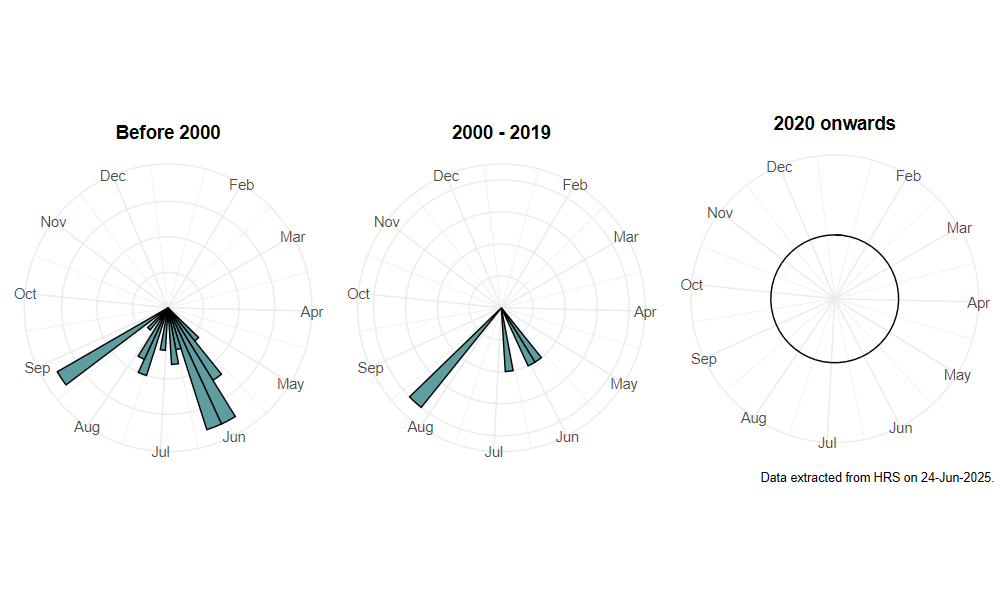Chrysotoxum octomaculatum Curtis, 1837
Identification
Identification difficulty = 4. ![]()
![]() according to Ball & Morris, 20241
according to Ball & Morris, 20241
Synonymy
Collin (1940)2 split this species to recognise C. verralli which is actually the commoner of the two species. Early records should be discounted unless supported by a voucher specimen.
Biology
This is a heathland species. The larva is probably associated with ant-tended root aphids. Adults are noted as flower visitors, having been taken at buttercups Ranunculus sp. and Rhododendron.
Flight period
The following plots show the number of unique records per week excluding those reported to be of immature stages.

Status
ENDANGERED - Ball & Morris, 20143. Endangered (RDB1) - Falk, 19914 and Shirt, 19875.
Distribution
There appear to be two discrete populations, one in Dorset (Hartland Moor, Gore Heath and Newton Bay), the other in Surrey (Thursley & Hankley Commons) and there are recent records from both areas. There are also records from Cornwall and Essex that may refer to this species, but they are old and may in fact prove to have been Chrysotoxum verralli.

-
Ball, S., & Morris, R. (2024). Hoverflies of Britain and Ireland. WILDGuides (3rd ed.). Oxford: Princeton University Press. ↩
-
Collin, J. (1940). Notes on Syrphidae (Diptera), IV. Entomologist’s monthly Magazine, 76, 150–158. ↩
-
Ball, S., & Morris, R. (2014). A review of the scarce and threatened flies of Great Britain. Part 6: Syrphidae. ( No. 9). Species status (pp. 1–130). Peterborough: JNCC. ↩
-
Falk, S. (1991). A review of the scarce and threatened flies of Great Britain. ( No. 39). Research and Survey in Nature Conservation (pp. 1–194). Peterborough: NCC. ↩
-
Shirt, D. (Ed.). (1987). Red Data Books: 2. Insects. Peterborough: NCC. ↩